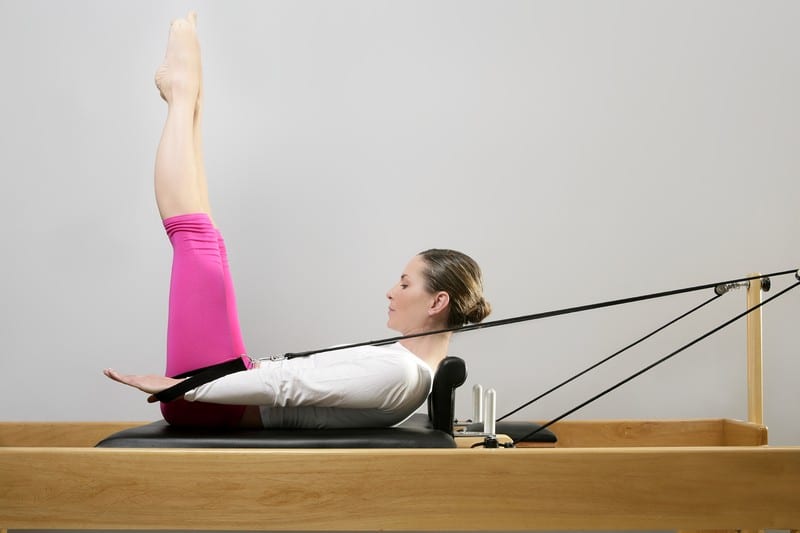Pilates is a phenomenal workout. It’s similar to yoga in that it can help you with your breathing, posture, balance, and flexibility. Where it differs, however, is that it focuses on the flow of your movement as opposed to the static moves of yoga. It has multiple health benefits, including:
- Increasing your flexibility
- Making you stronger and giving your muscles added tone
- Improving your coordination
- Various other mental, physical, and emotional benefits
Clearly, there are many reasons to engage in pilates. That said, there is one issue that can trip up beginners – particularly if they’re uninformed.
It’s quite common for many novices just starting out to feel sore after a Pilates session. This can have a discouraging effect, as it can cause those at the beginning levels to experience mild discomfort. While this may subside with time and practice, it’s also not uncommon for more advanced participants to experience some soreness as they advance through the various levels of Pilates proficiency.
This raises a question for many people looking to get into pilates: should you feel sore from Pilates class? Does the soreness you experience mean you’re doing something wrong, or is it a normal part of the process?
Let’s take a closer look at where you may feel soreness, when you’ll feel it, and how you can help manage it.
Why and where you may feel sore in your first few months of practice
When you first begin your practice, you will most likely use muscles you are not used to using, and some you may have never used before.
If you don’t exercise your core very often, you may experience soreness there. Pilates primarily works your core muscles.
In addition to your core, you may feel soreness in your arms and legs. Your extremities are used to perform many of the functions in pilates. Your abdomen, pelvis, and spine are also areas that benefit from Pilates.
If you haven’t worked these muscles/areas of your body in the very specific ways Pilates calls for, it’s common to experience soreness in these places.
This isn’t a bad thing. In fact, it’s quite the opposite. Soreness when beginning a new exercise regimen is exceedingly common. It also means you’re headed in the right direction. Your muscles are likely getting stronger. If you’re not getting sore, it could be a sign that your workout isn’t effective enough. You may need to ramp up the intensity to see better returns.
Why you may continue to feel sore even if you are a seasoned Pilates expert
But what about Pilates participants who have a little experience under their belt? Sometimes the soreness they experience early on can continue. Even the most well-versed Pilates practitioners who have been practicing for a while can still feel a great deal of soreness.
Like at the beginning stages, this is a sign that your performing with the proper level of intensity. What you may experience is something referred to as “Delayed-Onset Muscle Soreness.” This is when you don’t experience the soreness until 12-14 hours after your workout. This means that walking away from your workout may be an easy task, but the next morning you may feel tender in some of the very places you worked the previous day.
If you’re having consistent trouble moving or dull, persistent pain after a workout, you may be using the incorrect technique, working too hard, or have another undiagnosed health issue. But minor soreness should not alarm you.
Managing soreness from Pilates
While soreness is quite natural, that doesn’t make it any less uncomfortable. There are some ways you can manage the soreness you get from Pilates that make it easier to deal with:
- Drink water. Hydration is important for any exercise, so be sure to drink plenty before and after you do Pilates.
- Sleep well. The appropriate amount of sleep is important for any physical fitness regimen, be it Pilates, resistance training or cardio. Try to go to sleep at roughly the same time each night, awaken at roughly the same time each morning, and do your best to get 7-8 hours a night. Avoiding the blue light from the screens of your devices at least two hours prior to bedtime should help you sleep better as well.
- Warm up. Pilates will help you stretch, but performing light warm-up exercises before and after your workout will help your muscles recover faster.
- Listen to your body if you feel significant pain. You know the difference between pain and soreness. If you’re experiencing discomfort that extends beyond normal soreness you can either pause your workouts until it subsides, adjust your regimen with the help of one of our instructors, or seek medical attention if the issue doesn’t improve with rest.
- Take a hot (and cold) shower. The practice of taking alternating showers can aid your recovery. This is where you adjust your shower’s temperature back and forth between hot and cold. The effectiveness of this can vary depending on the person, of course. Some people may feel better with a nice, hot shower. Others may find more benefit from jumping in a tub full of ice. Experiment with several different recovery methods to see which works best for you.
Summary
The bottom line is that not only is it totally normal to feel sore after practicing Pilates no matter what level you’re at, but it’s also actually a good sign and possibly preferable if you do feel that way.
Obviously, be careful – if you feel any sort of sharp or lasting pain as a result of your workout, your form or technique may need tweaking. You may need to see a medical professional if you experience persistent or long-lasting pain as a result of the practice. But soreness is generally a sign that you’re challenging your body in a way that will lead to better physical fitness and improved tone.
Combining the soreness management techniques outlined above with proper technique, good form, and regular practice is paramount in ensuring your soreness doesn’t prevent you from continuing with Pilates and also getting stronger.
Don’t overdo it, but soreness can be your friend!
For more on how Sheppard Method Pilates can help you in your journey to better health through Pilates, contact us today!

